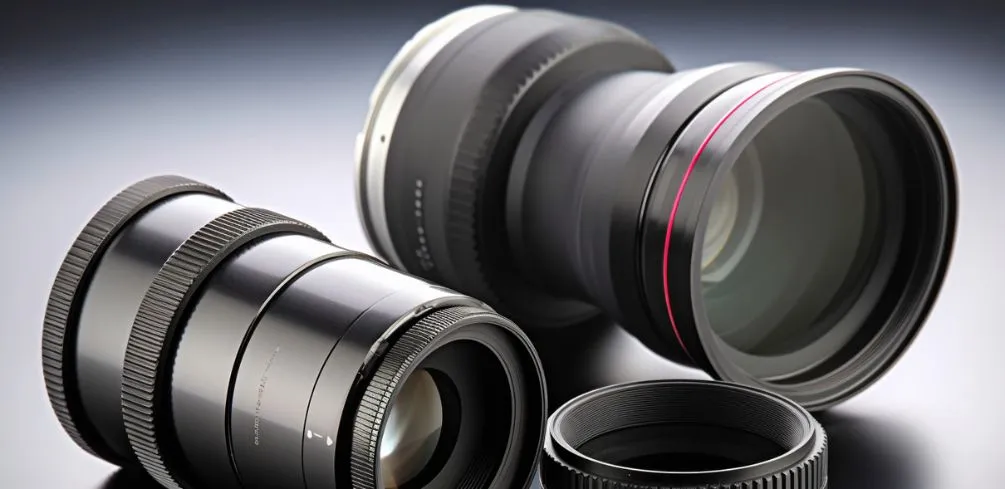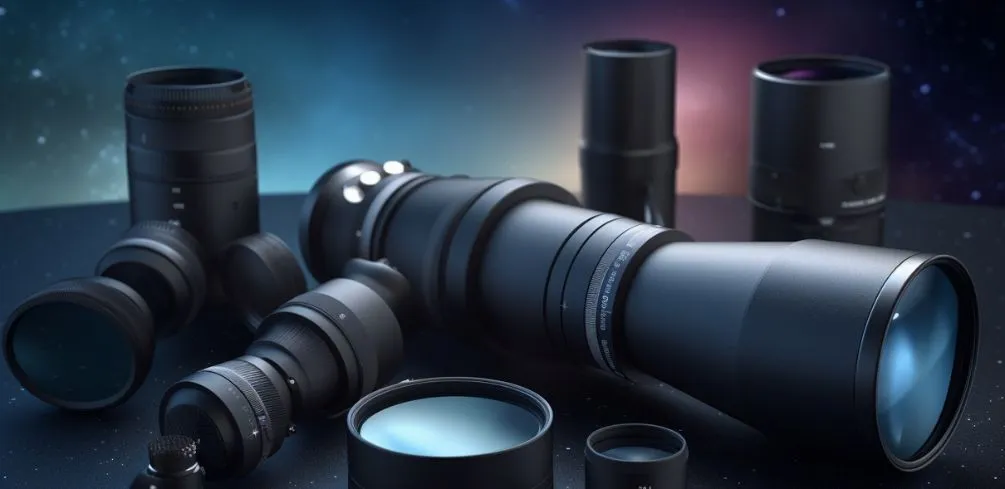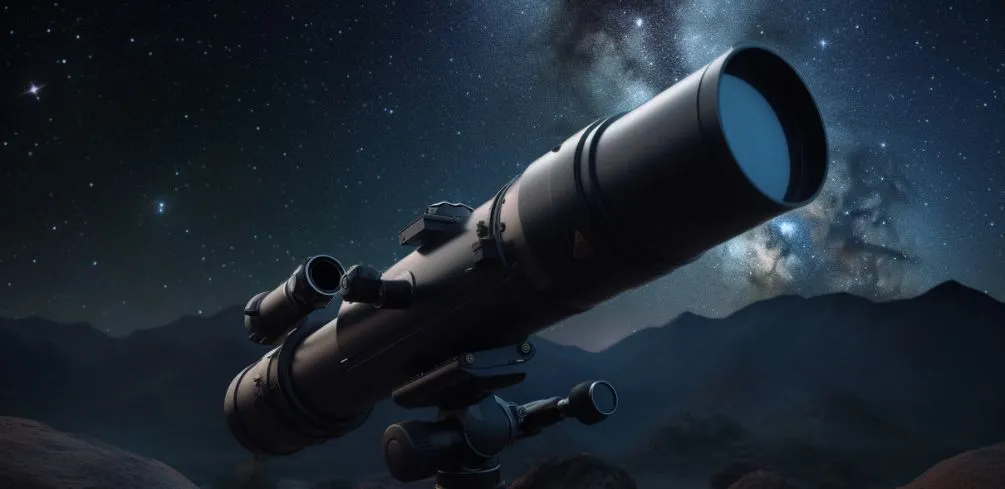You’ve finally decided to take the plunge and explore the wonders of the night sky with a shiny new telescope. As you browse through various models and specifications, you can’t help but notice that mysterious ‘mm’ abbreviation popping up everywhere.
Fear not, fellow stargazer! We’re here to demystify this seemingly cryptic term and guide you in selecting the perfect telescope lens for your celestial adventures.
In this article, we’ll dive into the meaning behind those two little letters – ‘mm,’ which stands for millimeters – and their significance when it comes to telescope lenses.
We’ll also discuss how choosing the right focal length (measured in mm) can dramatically improve your stargazing experience by providing sharper images and better overall performance.
So grab your favorite star chart, sit back, and prepare to be enlightened as we journey through space together on a quest for astronomical understanding.
Decoding the ‘mm’ Abbreviation

Let’s dive into deciphering the ‘mm’ abbreviation on a telescope lens, shall we? In the world of telescopes and photography, measurements are crucial for understanding how your equipment works and what to expect in terms of performance.
Deciphering abbreviations can be challenging at first, but once you grasp their meaning, it’ll help you make informed decisions about the tools you use.
Understanding measurements is vital when delving into the realm of telescopes. The ‘mm’ abbreviation stands for millimeters and typically refers to one of two critical aspects: aperture or focal length. Aperture is the diameter of a telescope’s main light-gathering element (usually its primary mirror or lens), while focal length refers to the distance between that element and the point where light converges to form an image.
Both these aspects play significant roles in determining a telescope’s power, clarity, and overall performance.
When looking at a telescope lens specification with an ‘mm’ value attached to it, consider whether it represents aperture or focal length. Knowing this information helps you understand how much light your telescope gathers (aperture) and how much magnification it provides (focal length).
Additionally, understanding these measurements allows you to easily compare different models based on their specifications so that you can choose the right instrument for your stargazing adventures.
Importance of Focal Length

Focal length’s significance is often underestimated, but it’s a crucial aspect in determining a telescope lens’ magnification and field of view. The focal length impacts your ability to observe celestial targets with clarity and precision. It’s the distance from the telescope’s primary mirror or lens to the focal point, where light rays converge to form an image.
Aperture size, another critical factor in telescopes, is related to the diameter of the main optical element, which can be either a mirror or a lens. A larger aperture allows more light to enter, providing brighter and sharper images; however, it’s essential to strike a balance between aperture size and focal length for optimal results.
Magnification variations come into play when you use different eyepieces with your telescope. Each eyepiece has its own focal length that affects the magnification power of your scope when combined with its focal length. So, how do you calculate this?
It’s easy – simply divide the telescope’s focal length by the eyepiece’s focal length; for example: if your telescope has 1000mm of focal length and you’re using a 20mm eyepiece, then 1000 ÷ 20 = 50x magnification.
Keep in mind that optical designs also influence how much usable magnification you can achieve before getting blurry images due to atmospheric conditions or other factors.
Understanding these relationships will help you make informed decisions about what type of equipment best suits your needs as an amateur astronomer or seasoned stargazer.
Remember that while higher magnifications might seem appealing initially, they may not necessarily contribute positively towards observing certain celestial targets effectively due to limited fields of view or reduced image brightness caused by increased power usage.
Therefore, consider investing time in research and experimentation with various combinations of aperture sizes, optical designs, and eyepieces until you find what works best for your specific viewing preferences and astronomical goals without compromising image quality or your overall stargazing experience.
Choosing the Right Telescope Lens

Now that you’ve grasped the importance of focal length, it’s time to dive into selecting the perfect telescope lens for your stargazing adventures. When choosing a lens, considering factors such as lens compatibility and potential telescope upgrades is crucial to ensure you get the best possible experience.
Let’s explore some key aspects to help you make an informed decision.
Firstly, lens compatibility is essential for achieving optimal performance from your telescope. Each telescope has specific requirements when it comes to eyepiece size (measured in millimeters) and design. For instance, refractor telescopes usually require eyepieces with longer focal lengths and smaller field-of-view angles compared to reflector telescopes.
Be sure to consult your telescope’s manual or manufacturer for recommended eyepiece types and sizes before making a purchase.
Additionally, consider investing in a versatile eyepiece that can be used with multiple telescopes if you plan on upgrading or expanding your collection in the future.
When planning any telescope upgrades, keep in mind that changing just one component can have significant impacts on overall performance. Upgrading your primary mirror or objective lens may necessitate purchasing new eyepieces or other accessories due to changes in magnification capabilities or image quality.
Furthermore, don’t forget about mount stability – as larger lenses often come with increased weight which may require a more robust mounting system.
Prioritize balance between power and portability; upgrading solely for higher magnification might leave you disappointed if it becomes too cumbersome for regular use.
By considering these factors and thoroughly researching available options within your budget range, you’ll be well-equipped to choose the perfect lens for both current needs and potential future expansions of your stargazing endeavors!
Enhancing Your Stargazing Experience

So, you’ve got your telescope lens sorted, but why stop there when there’s a whole universe of accessories and techniques to elevate your stargazing experience to astronomical heights? With the right tools and know-how, you can enhance your observations and become an expert in no time.
Here are some essential stargazing tips to keep in mind:
Equipment maintenance
- Regularly clean your telescope lenses with a soft brush or microfiber cloth to remove dust and debris.
- Ensure that your telescope is properly collimated (aligned) for optimal image clarity.
- Invest in quality eyepieces with different focal lengths for various magnification options.
Light pollution solutions
- Choose dark sky sites away from city lights for the best viewing conditions.
- Use filters specifically designed to block out light pollution while preserving celestial object visibility.
- Advocate for responsible outdoor lighting policies in your community.
Astronomy apps and celestial events
- Utilize smartphone apps like SkySafari or Stellarium to identify stars, planets, and other celestial objects easily.
- Track upcoming celestial events such as meteor showers, eclipses, or planetary alignments using online resources like TimeAndDate.com or EarthSky.org.
To further refine your skills and knowledge, consider joining an astronomy club or attending local star parties where experienced amateur astronomers can share their expertise. Engage with online forums dedicated to astronomy discussions where you can ask questions, seek advice on equipment purchases, or simply connect with others who share your passion for stargazing.
By immersing yourself into the world of astronomy enthusiasts and continuously learning about new techniques and discoveries within this fascinating field of study, you’ll find yourself eagerly anticipating each clear night sky opportunity that comes along.
Frequently Asked Questions
How does the aperture size of a telescope lens impact the overall image quality and clarity?
Understanding the significance of the aperture in a telescope lens is crucial for achieving optimal image quality and clarity.
Larger apertures improve light-gathering ability, allowing you to see fainter objects with greater detail. This increased resolution enhancement leads to less image distortion and sharper views of celestial bodies.
Moreover, larger apertures enable better viewing distances by providing increased magnification potential without sacrificing brightness or contrast.
Overall, investing in a telescope with an appropriate aperture size will elevate your stargazing experience through superior image quality and heightened observational capabilities.
Are there any specific maintenance tips to prolong the lifespan of telescope lenses?
To prolong the lifespan of your telescope lenses, it’s crucial to follow some essential maintenance practices.
Prioritize lens cleaning by using a soft brush or air blower to remove dust particles and a specialized lens-cleaning solution with microfiber cloth for smudges.
Moisture prevention is key; invest in silica gel desiccants or a dehumidifier for your storage area to ward off fungal growth on the lens surfaces.
For optimal storage solutions, consider padded cases or customized foam inserts that offer impact protection and minimize vibrations during transportation.
Don’t forget protective covers for both the objective and eyepiece ends of your telescope when not in use, shielding them from dirt and potential damage.
Lastly, be mindful of alignment adjustments; regularly check your telescope’s collimation to ensure crisp images without any distortion caused by misaligned optics.
By following these tips, you’ll maintain top-notch performance and extend the life of your precious investment in astronomical observation.
Can telescope lenses be used interchangeably between different telescope brands and models?
When considering lens compatibility between different telescope brands and models, it’s essential to take into account several key factors that can affect the performance and fit of your lenses.
Brand variations may result in differences in mounting systems, making some lenses incompatible with certain telescopes.
Additionally, lens coatings can vary across manufacturers, impacting image quality and color fidelity.
Another crucial aspect to consider is the focal length differences between your telescope and the lens you wish to use; mismatched focal lengths could lead to unsatisfactory magnification levels or even an inability to achieve proper focus.
So, while it’s possible that some lenses may be interchangeable between various telescopes, it’s always best to thoroughly research each component before attempting any swaps – ensuring a seamless fit and optimal viewing experience for your stargazing adventures.
How does the quality of glass used in a telescope lens affect its performance and durability?
As an avid stargazer, you know that the quality and type of glass used in your telescope lens play a crucial role in its performance and durability.
Glass composition, manufacturing techniques, and lens coatings all contribute to the overall optical capability of your scope. By using high-quality glass materials with low dispersion properties, manufacturers can help minimize chromatic aberration—the unwanted separation of colors causing blurry images—that often plagues lower-end optics.
Achromatic lenses are designed specifically to reduce this effect by combining multiple lens elements made from different types of glass with varying refractive indices. Advanced manufacturing techniques ensure precision polishing and alignment for optimal image clarity, while specialized lens coatings further enhance light transmission and reduce reflections for crisp, vibrant views of celestial wonders.
Ultimately, investing in a telescope with superior glass components will reward you with stunning visual experiences that truly stand the test of time.
Are there any additional attachments available to further improve the visual experience when using a telescope lens?
Imagine stargazing with your telescope and capturing breathtaking images of the night sky to share with friends and family. To elevate this experience, there are visual enhancement tools available that cater to various needs.
Lens coatings play a crucial role in improving light transmission and reducing glare, enabling sharper and higher contrast views. Smartphone adapters can be attached to your telescope for effortless astrophotography, allowing you to capture stunning celestial objects like never before.
Barlow lenses offer significant benefits by doubling or tripling the magnification while maintaining image quality, making it easier to observe fine details on planets such as Jupiter’s Great Red Spot or lunar craters. Eyepiece selection is another vital aspect of optimizing your viewing experience; choosing eyepieces with different focal lengths and designs can provide varying fields of view, eye relief, and levels of optical performance.
By investing in these accessories and attachments, you’ll enhance your telescope’s capabilities and indulge in an awe-inspiring visual journey through the cosmos.
Conclusion
In conclusion, understanding the meaning of ‘mm’ on a telescope lens is crucial for your stargazing experience.
With over 100 billion galaxies in the observable universe, selecting the right focal length can make all the difference in witnessing celestial wonders.
So go ahead and delve into the technicalities of telescope lenses. The more you know, the better equipped you’ll be to explore the vastness of space and uncover its countless mysteries.

